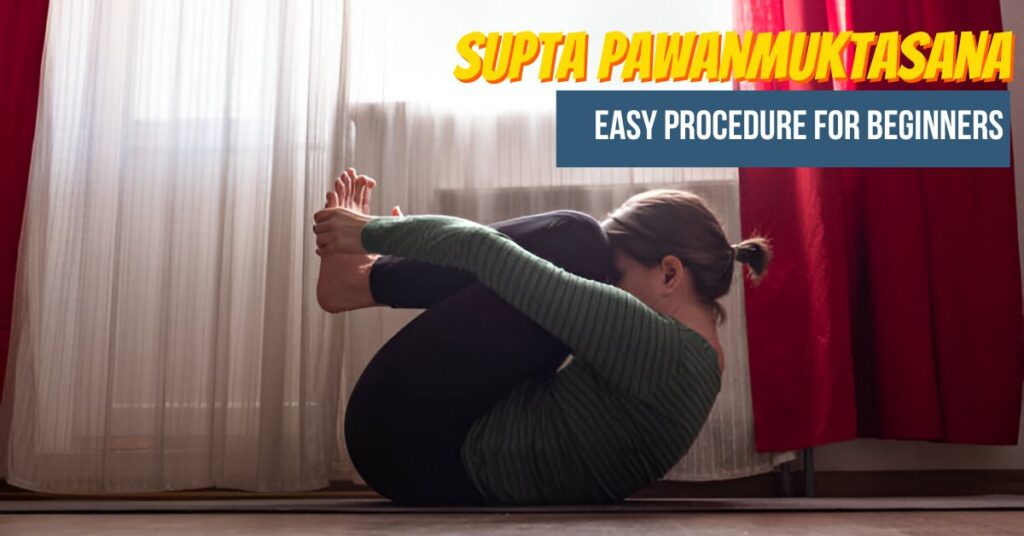Feeling tired, bloated, or emotionally overwhelmed? One of the simplest yet most powerful poses in yoga is here to help you reset: Viparita Karani, also known as the Legs-Up-the-Wall Pose. Whether you need to cool down after a long day, aid digestion, or balance your hormones, this gentle inversion offers it all.
In this blog by Yogaasan, we’ll explore the Viparita Karani steps, its origin as a mudra and asana, and the wide-ranging viparita karani benefits for your body and mind.
What is Viparita Karani?
Viparita Karani is a mild inversion that involves lying on your back with your legs extended vertically against a wall. The term comes from Sanskrit where “viparita” means “inverted” and “karani” means “action.” While commonly practiced as a restorative pose, it is also referred to as Viparita Karani Mudra in classical texts, where it’s known to preserve vitality and reverse the effects of aging.
This simple pose is suitable for beginners and advanced practitioners alike and is a must-add to your daily routine, especially before bedtime. Interestingly, when practiced 30–45 minutes after meals, Viparita Karani helps in reducing bloating, easing digestion, and calming the system, making it one of the few poses that can be gently done after food, especially if supported with a pillow.
Viparita Karani Steps and How to Practice It?
Before you begin, ensure you have a quiet space, a yoga mat, and a folded blanket or bolster if needed. Here’s how to perform the Viparita Karani pose safely:
Viparita Karani Steps:
- Sit sideways next to a wall with one hip touching the base.
- Gently lie back as you swing your legs up the wall.
- Adjust your hips so they are slightly away or right against the wall.
- Place a folded blanket or bolster under your lower back for extra support (optional).
- Rest your arms by your side, palms facing up.
- Close your eyes and breathe deeply. Stay for 5 to 15 minutes.
Precautions for Viparita Karani:
- Avoid if you have glaucoma or serious eye pressure issues.
- Those with neck or back injuries should use props or consult a teacher.
- Do not practice immediately after a heavy meal (wait at least 30 minutes).
- If you are recovering from kidney-related issues, you may also benefit from restorative poses like Setu Bandhasana for deeper abdominal support.
Benefits of Viparita Karani Asana
The viparita karani benefits pose go beyond just physical relaxation. Let’s break down the most impactful ways this posture supports your health:
- Improves blood circulation and reduces swelling in feet
- Enhances digestion when practiced regularly
- Supports lymphatic drainage and detoxification
- Balances hormones and eases PMS symptoms
- Relieves anxiety, mild depression, and stress
- Calms the nervous system and promotes better sleep
- Helps in weight management by stimulating metabolism
- Viparita Karani after food is gently beneficial if done in a semi-reclined, restorative version
In ancient yogic texts, Viparita Karani Mudra was considered a powerful practice to preserve youth and redirect prana (life force). Viparita Karani Mudra in hindi is called विपरीत करनी मुद्रा, it was believed to prevent premature aging and improve hormonal functions by reversing energy flow in the body. Unlike the modern passive pose with support, Viparita Karani Mudra Asana traditionally required lifting the hips off the floor without props, demanding both strength and breath control.
Viparita Karani Mudra vs Asana
| Aspect | Viparita Karani Mudra | Viparita Karani Asana |
| Traditional Texts | Found in Hatha Yoga Pradipika & Gheranda Samhita | Modern yoga adaptation |
| Focus | Energy redirection, hormone balance | Relaxation, stress relief |
| Practice Level | Requires core engagement, sometimes lifting hips | Legs supported on the wall, more restorative |
| Purpose | Anti-aging, vitality, prana conservation | Calming, soothing, beginner-friendly |
Common Conditions Viparita Karani May Help With
| Condition | How Viparita Karani Helps |
| Leg fatigue or swelling | Promotes blood return to the heart and reduces pressure |
| Mild insomnia | Activates the parasympathetic nervous system |
| Anxiety or mood swings | Balances hormones and lowers cortisol levels |
| Hormonal imbalance or PCOS | Stimulates reproductive organs and calms the system |
| Indigestion or bloating | Enhances digestive fire when practiced mindfully |
Final Thoughts
If you’re looking for a pose that heals, restores, and calms both body and mind, Viparita Karani yoga is a must-try. It’s gentle, effective, and incredibly accessible. Whether you’re using it to relax after a long day or as part of your hormone-balancing routine, the benefits of Viparita Karani will unfold with consistent practice.
At Yogaasan, we encourage you to embrace the power of stillness. Let your legs go up the wall and allow everything else to fall back into balance.
Frequently Asked Questions (FAQs)
What is Viparita Karani and what are its benefits?
Viparita Karani is a gentle inversion pose where legs are rested up against a wall. It improves circulation, relieves stress, reduces swelling in legs, supports digestion, and helps balance hormones. It’s one of the most rejuvenating and calming yoga postures.
Can we do Viparita Karani during period?
Yes, you can. But if you experience heavy bleeding or cramping, it’s best to avoid inversions. For light flow days, practicing Viparita Karani pose for a few minutes can ease discomfort. Always listen to your body when practicing yoga for periods.
Is Viparita Karani good for weight loss?
While it’s not a cardio-intensive pose, Viparita Karani for weight loss works by improving metabolism, calming stress hormones, and supporting digestive function. It can be part of a holistic weight-loss routine.
How long should you hold Viparita Karani?
Anywhere between 5 to 15 minutes is ideal. Beginners can start with 5 minutes and gradually increase time as they get more comfortable.
Can I do Viparita Karani every day?
Absolutely! Viparita Karani yoga is safe and gentle enough to practice daily. It’s particularly helpful when added to your bedtime or post-meal routine.








